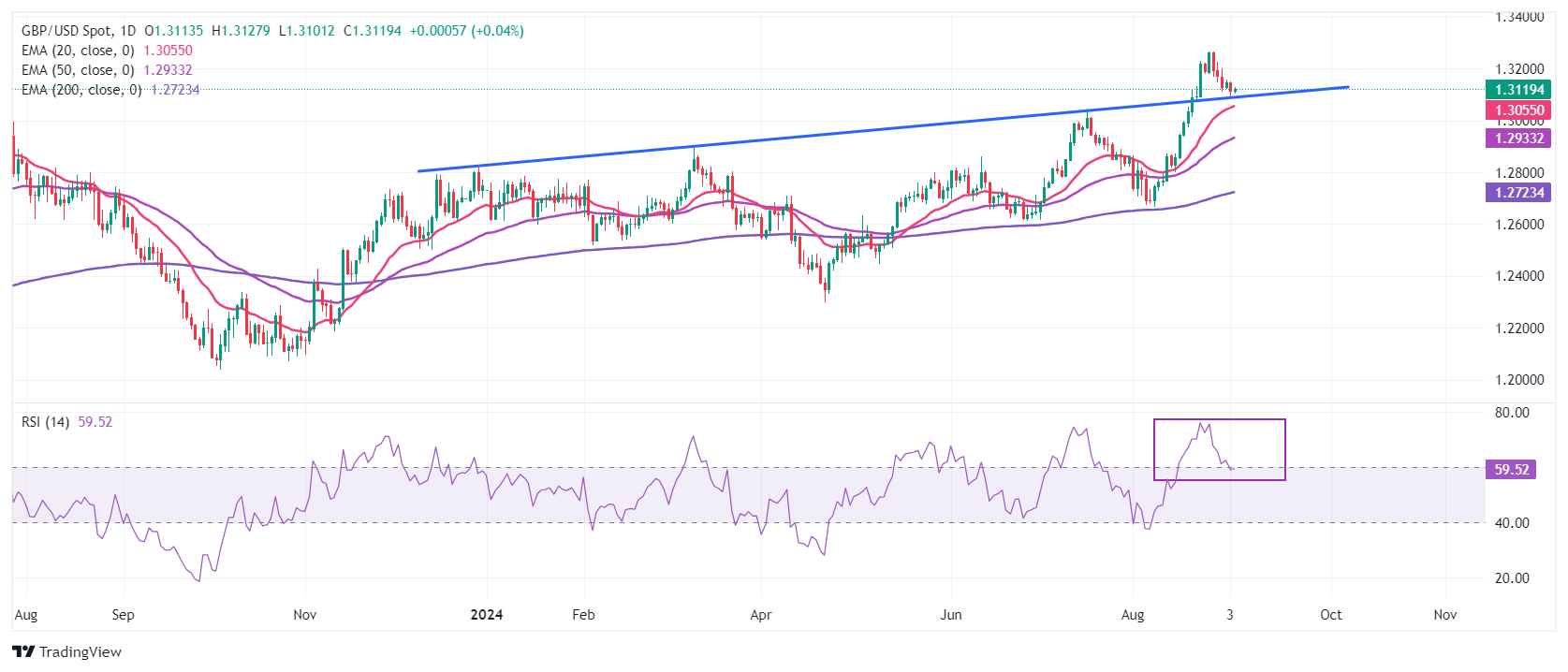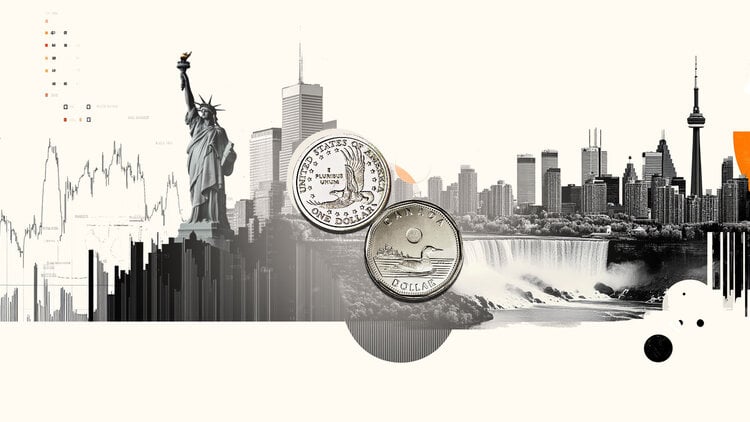- The British Pound finds temporary support near 1.3100 against the US Dollar as the Greenback corrects slightly.
- Investors expect the Fed to cut interest rates this month, but are divided on the size of the possible cut.
- The BoE’s policy easing cycle is expected to be shallow for the remainder of the year.
The British Pound (GBP) is attempting to find a firm footing near the 1.3100 round-level support in the London session on Wednesday. The GBP/USD pair is struggling to gain bids as market sentiment sours amid rising uncertainty ahead of the United States (US) Non-Farm Payrolls (NFP) data for August, due out on Friday.
S&P 500 futures are down further in European trading hours after a bearish Tuesday, exhibiting a sharp decline in risk appetite among market participants. The US Dollar Index (DXY), which tracks the value of the greenback against six major currencies, is marginally correcting near 101.60.
Official labor market data will influence market speculation about the size of the Federal Reserve’s (Fed) interest rate cut in September. Markets are fully pricing in the Fed pivoting toward policy normalization this month, but traders remain divided on whether the central bank will begin the policy easing cycle aggressively, with a large interest rate cut, or more gradually.
If the US NFP data points to a further slowdown in labor demand and higher unemployment, market expectations for the Fed to cut its key interest rates by 50 basis points (bps) would rise sharply. In a speech at the latest Jackson Hole (JH) Symposium, Fed Chair Jerome Powell pledged to support the labor market should it continue to deteriorate. Conversely, stable or better-than-projected employment data would weaken expectations for a large rate cut.
On Wednesday, investors will focus on the US JOLTS Job Openings data for July and the Fed Beige Book, due out at 14:00 GMT and 18:00 GMT, respectively. Economists expect US employers to post 8.1 million new job openings, slightly below June’s 8.184 million.
Daily Market Wrap: Sterling remains muted in the absence of top-tier UK economic data
- The British Pound is showing a muted performance against its major peers on Wednesday. The British currency is struggling to gain strength despite growing speculation that the Bank of England’s (BoE) policy easing cycle would be shallow for the rest of this year compared to that of its peer central banks.
- According to money market price data, the BoE is expected to cut interest rates by 40 bps over the remainder of the year, while the European Central Bank (ECB) is projected to cut by 65 bps, Reuters reported. Over the same time frame, the Fed is projected to cut its key interest rates by 100 bps, according to the CME FedWatch tool.
- An improvement in the UK economic outlook and a slower deceleration in services inflation have supported expectations that the BoE will opt for a gradual policy easing cycle. The UK economy is expected to perform better than initially anticipated due to an expansion in both manufacturing and the services sector.
- The final estimate of the S&P Global/CIPS Composite PMI came in at 53.8 in August, higher than the preliminary release of 53.4. The indicator suggests that the economy grew at the fastest pace since April.
Technical Analysis: British Pound Looking to Gain Ground Near 1.3100
The British Pound is rising from a fresh weekly low of around 1.3090 against the US Dollar. Still, the GBP/USD pair is struggling to find a firm base near the round-level support of 1.3200. The Cable is likely to find buying interest near the breakout region of an ascending trend line drawn from the December 28, 2023 high of 1.2828 on a daily time frame.
The 14-day Relative Strength Index (RSI) is falling near 60.00 after breaking out of overbought conditions, signaling a lack of bullish momentum.
However, the short to long term upsloping Exponential Moving Averages (EMAs) suggest a strong bullish bias.
If the bullish momentum resumes, Cable is expected to rise towards the psychological resistance of 1.3500 and February 4, 2022 high of 1.3640 after breaking above a fresh two-and-a-half-year high of 1.3266. On the downside, the psychological level of 1.3000 will be the crucial support for the British Pound bulls.
The British Pound FAQs
The Pound Sterling (GBP) is the oldest currency in the world (886 AD) and the official currency of the United Kingdom. It is the fourth most traded currency unit in the world, accounting for 12% of all transactions and an average of $630 billion a day, as of 2022.
Its key currency pairs are GBP/USD, also known as the “Cable,” which accounts for 11% of the forex market, GBP/JPY, or the “Dragon” as it is known to traders (3%), and EUR/GBP (2%). The British Pound is issued by the Bank of England (BoE).
The most important factor influencing the value of the British Pound is the monetary policy decided by the Bank of England. The Bank of England bases its decisions on achieving its main objective of “price stability”, i.e. a stable inflation rate of around 2%. Its main tool for achieving this is the adjustment of interest rates.
When inflation is too high, the Bank of England tries to contain it by raising interest rates, making credit more expensive for individuals and businesses. This is generally positive for the GBP, as higher interest rates make the UK a more attractive place for global investors to park their money.
When inflation is too low, it is a sign that economic growth is slowing. In this scenario, the BoE will consider lowering interest rates to make credit cheaper, so that companies borrow more to invest in growth-generating projects.
The data released gauges the health of the economy and can influence the value of the Pound. Indicators such as GDP, manufacturing and services PMIs, and employment can influence the direction of the Pound.
A strong economy is good for the British Pound. Not only does it attract more foreign investment, but it may encourage the Bank of England to raise interest rates, which will directly strengthen the British Pound. Conversely, if economic data is weak, the British Pound is likely to fall.
Another significant indicator for the pound is the trade balance. This indicator measures the difference between what a country earns from its exports and what it spends on imports during a given period.
If a country produces highly sought-after exports, its currency will benefit exclusively from the additional demand created by foreign buyers who wish to purchase these goods. Therefore, a positive net trade balance strengthens a currency and vice versa for a negative balance.
Source: Fx Street
I am Joshua Winder, a senior-level journalist and editor at World Stock Market. I specialize in covering news related to the stock market and economic trends. With more than 8 years of experience in this field, I have become an expert in financial reporting.








